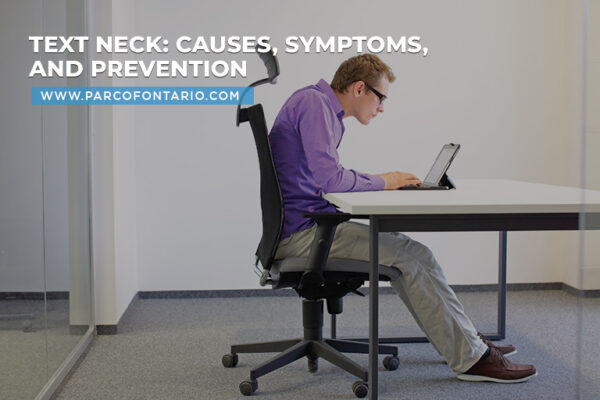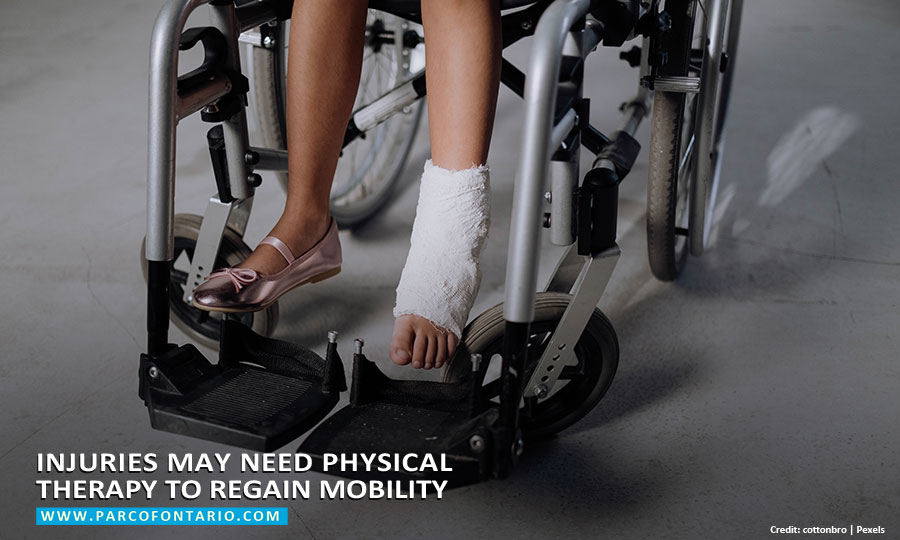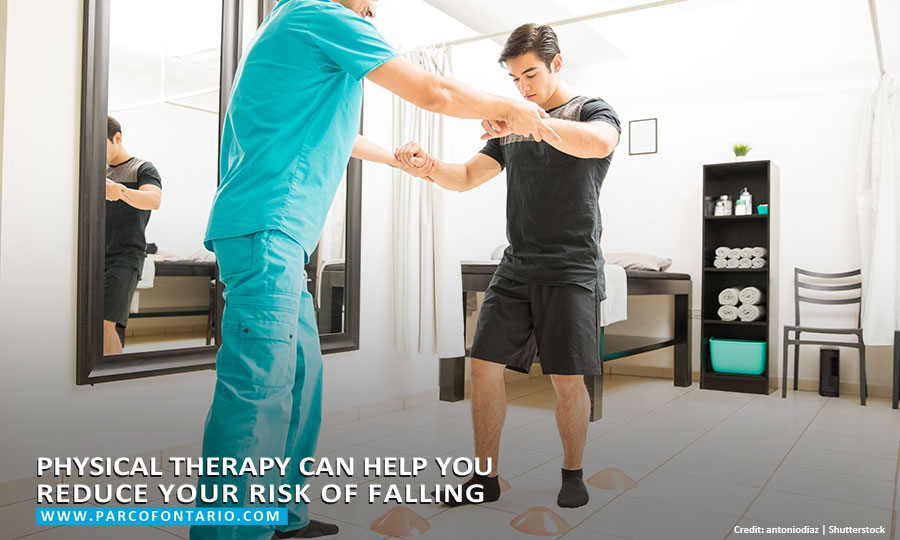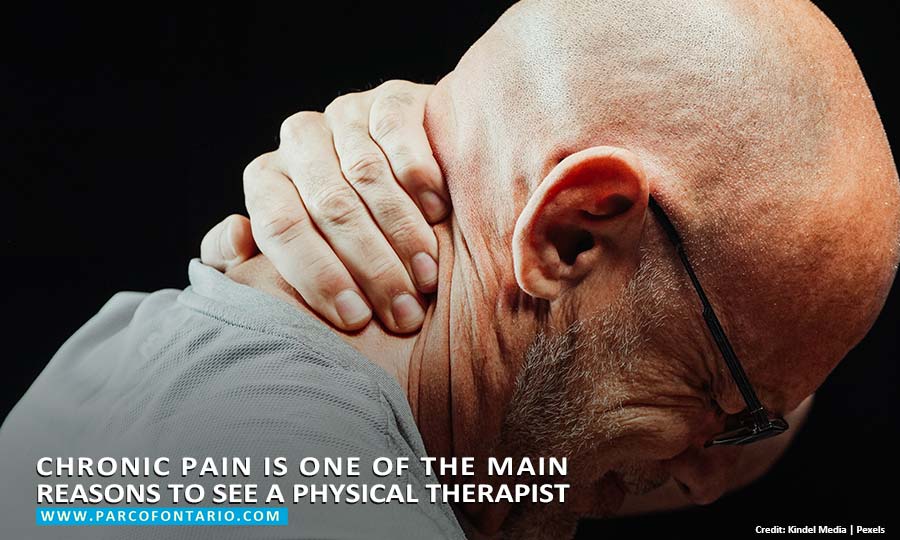
Text Neck: Causes, Symptoms, and Prevention
Many of us spend long hours hunching over our electronic mobile devices and laptops. As we spend more time texting, browsing social media, and reading on our devices, this constant downward gaze…
Read More

September 8 is World Physical Therapy Day to celebrate the physical therapists’ important role in keeping people healthy and strong. While the field of physical therapy is known worldwide, most people usually associate it with treatments to bones and muscles only. While partly true, the list of ailments that can be treated by physiotherapy are vast.
According to the Canadian Physiotherapy Association, physiotherapy can aid with pain management and rehabilitation after an acute injury like a sprained ankle. It is also used to manage chronic diseases like diabetes and heart disease. A physiotherapist also provides education and guidance towards health promotion, and illness and injury prevention.
In honour of physical therapists, here’s what you need to know about the field. Whom do physical therapists help and how can you benefit?
Our bodies have a way of letting us know when something isn’t right. This is frequently manifested as discomfort on a certain body part. Although the majority of these symptoms are temporary and may be treated with over-the-counter medications, they still might require assessment and treatment because this means that your body is not functioning as effectively as it could or should be.
Here are some signs that physical therapy might be necessary:
After an injury, one should expect some discomfort as the healing process takes place. However, if your discomfort lasts more than a few days and is interfering with your ability to work and complete other daily activities, it’s time to see a doctor. Chronic pain occurs when the body has been injured and the pain persists for a long time as a result of the trauma. Physiotherapists will have to assess your “pain pathways”. They can then analyze the problem and develop a tailored exercise and rehabilitation program.
Balance problems are often associated with their feet, legs, or back, but the problem can also be with your ears. The vestibular system, which is located in the inner ear, is critical for maintaining balance. If these are compromised, you will have symptoms such as unsteadiness, dizziness, and even vertigo. Vestibular rehabilitation can help restore balance by implementing a series of neck, head, and even eye exercises that train your CNS (central nervous system) to combat these symptoms.

Many office and desk employees experience stiffness and rigidity after a long day of sitting in the same position. Combine this with poor posture, especially as work-from-home setups become increasingly popular, you’re most likely to develop long-term muscle and joint tension, resulting in chronic discomfort. For example, headaches or a manifestation of pain in the lower back region may be experienced. Our bodies are made to be mobile and move regularly. A physiotherapist can offer posture advice, treatment, and management, as well as instructions to improve your desk and workplace environment.
Reduced flexibility and feelings of pain or stiffness might make it difficult to move or perform certain actions like bending over, touching your toes, or reaching upward with your arms extended. If you notice limitations in your mobility and can’t move as freely as you used to, a physical therapist can evaluate the situation and lead you through a series of exercises aimed at increasing your flexibility and mobility. They will do this by targeting the muscles and tissues in the problem areas, relaxing the muscles, and strengthening supporting tissues.
Urinary incontinence is defined as the inability to control or regulate when you need to pass urine, and it is a prevalent condition among the aging population. Urge incontinence and stress incontinence are the two most common types of incontinence. The former is marked by an uncontrollable need to pass pee, with urine leaking from the bladder without warning, while the latter is caused by an increase in bladder pressure when you cough, laugh, or sneeze. In both cases, the problem will be assessed by the physiotherapist and may prescribe pelvic floor exercises to strengthen the area.

Depending on their specialty, physical therapists can treat a wide range of medical issues. The most common reasons for physical therapy include:
Physical therapy is frequently recommended by primary care doctors as the first step to issue management. More often than not, individuals can return to their previous level of functioning with the support of a specialized physical therapy program, which encourages activities and lifestyle modifications that can help prevent additional injury and enhance overall health and well-being.
Based on the purpose for treatment, the benefits of physical therapy will allow you to:
Surgery may not be necessary if physical therapy can help you remove discomfort or recuperate from an accident. Even if surgery is required, pre-surgical physical rehabilitation may be beneficial. In many circumstances, if you go into surgery stronger and in better form, you are more likely to recover quickly. In addition, avoiding surgery lowers healthcare costs.
Research suggests that physical treatment is just as helpful as surgery for some conditions including, meniscal tears and knee osteoarthritis, rotator cuff tears, spinal stenosis, and degenerative disk disease.
Physical function and movement are essential for health, wellbeing, and fitness, as well as for managing pain, earning a living, and maintaining independence. Physical therapy can help you stand, walk, or move more easily, regardless of your age. Stretching and strengthening activities might help you regain and even improve the range of your mobility. Physiotherapists can also help people with a proper assistive device, like canes and crutches, as well as assess them for orthotic prescription. Finally, they can develop a personalized care plan to allow you to do any activity while ensuring maximum performance and safety.

As you begin physical therapy, you will be assessed for fall risk. If you’re at high risk of falling, therapists will give you exercises to check your balance in a safe and controlled manner, simulating real-life conditions. Therapists can also aid you with coordination training and assistance tools to help you walk more safely.
When the balance problem stems from an issue with one’s vestibular system, physical therapists can execute specialized exercises to swiftly restore appropriate vestibular functioning and lessen or eliminate symptoms of dizziness or vertigo.
Many conditions develop as people age, including arthritis and osteoporosis. Sometimes, there may be a need for joint replacement surgery. Physical therapy for the elderly is extremely essential for quick healing and recovery at such a vulnerable age. Physical therapists are experienced in assisting patients post-operation and in conservative management of arthritic or osteoporotic disorders, regardless of age.
Physiotherapy can help you achieve the recommended level of physical activity. As a result, it can have a positive impact on your physical, mental, and social well-being. Since exercise can help lower your blood sugar, physical therapy is often included in many diabetes management plans. Diabetes patients may also experience issues with sensation in their feet and legs. Physical therapists can assist in providing and educating these patients on the appropriate foot care to avoid future problems.
Some cardiac illnesses and surgical treatments can benefit from cardiovascular and pulmonary rehabilitation. After a heart attack or operation, patients may need cardiac rehabilitation, but if daily functioning is impaired, they may also need physical therapy.
Additionally, physical therapy can also be beneficial to individuals with pulmonary difficulties. Consistent strengthening, conditioning, and breathing exercises can help improve their physical endurance, stamina, and overall quality of life

Pregnancy and post-partum care are two of the most common health concerns specific to women. Physiotherapy for women’s health can provide the special care they need to treat these health issues. Likewise, bowel incontinence, breast cancer, constipation, fibromyalgia, lymphedema, pelvic health, pelvic discomfort, and urine incontinence are just among the many conditions that physical therapy can help you with.
Sports rehabilitation is one of the many benefits physical therapy is known for. Physical therapists are trained to recognize how certain sports can raise your risk of certain ailments, like stress fractures for distance runners and tennis elbow for racquet players. A sports therapist can assist an athlete in maximizing their performance by strengthening specific body regions, conditioning the muscles, and creating the right recovery or prevention exercise routines so that they can return to their sport safely.
Stroke is a condition where an individual may lose some function and movement. Physical therapists work with stroke survivors in the early weeks and months of rehabilitation to keep these muscles toned and engaged, even before they regain voluntary movement. Physical therapy allows patients to relearn everyday abilities and retrain their healthy brain cells to regulate the injured body parts if and when the function returns. This allows them to be more self-sufficient at home and reducing the burden of care for toileting, bathing, dressing, and other activities.

While opioids administered by a doctor may be appropriate in some circumstances, they merely serve to mask discomfort. Physical therapists assist patients in managing pain without the hazards associated with opiate use.
Therapeutic exercises and manual therapy techniques like joint and soft tissue mobilization, as well as treatments like ultrasound, taping, and electrical stimulation, can help relieve pain and improve muscle and joint function. These treatments can also help to prevent discomfort from returning.
The importance of physical therapy cannot be emphasized enough. It is helpful in both prevention and rehabilitation. Furthermore, treatment is available for a variety of injuries, diseases, and disabilities. Physical therapists are your partners in recovery.
Needing physiotherapy? The Physiotherapy and Rehabilitation Centres of Ontario offers a pathway to recovery with its treatment technologies and the extensive group of health professionals.
You no longer need to search “physical therapy near me.” Here are our 5 branches offering physiotherapy you can call and visit today: